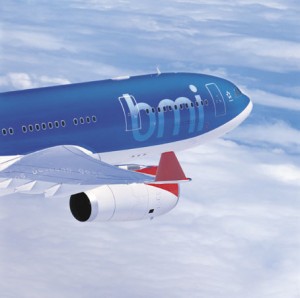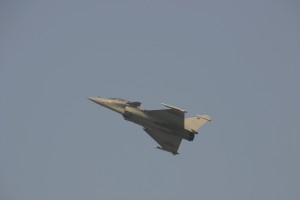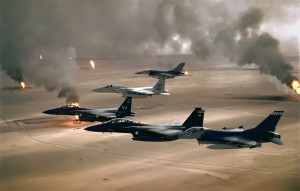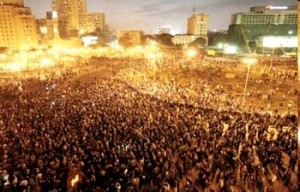The events currently unfolding in the Middle East as the people protests, fanned by social media, has profound implications for the region – which as yet are still unclear. Autocratic regimes, their rule, formerly seeming strong, are now either under siege or facing major challenges. But what are the implications for aviation?
Middle East/North Africa tourism/traffic
One immediate effect has been on air traffic to the region with airlines scrambling to cancel flights as the scale and intensity of the protests became clear. In particular, Egypt relies heavily on its tourist trade and while previous examples of Islamic terrorism in the country have caused alarm, these have generally been contained through increased security measures. However, a full-blown ‘peoples revolution’, with the army now in charge, means extra uncertainty and will likely have a negative effect on tourism and passenger numbers for flights.
Other popular tourist destinations, too, have seen protests such as in Tunisia (where the Twitter and Facebook powered protests began), and Morocco. Meanwhile Libya which had been hoping to reap the benefits of its rapprochement with the West, was looking forward to increased tourist trade. But the popular revolt against Ghaddifi’s regime has thrown the country into chaos. BMI, for example, had to cancel flights to Tripoli immediately after launching a brand new service there. The ferocity of the uprising, bordering on a civil war, has led other airlines to also axe flights, including British Airways, Emirates, Lufthansa and others.
Further out, the protests in Yemen and Bahrain show the Gulf is not immune to the wildfire of unrest sweeping the region. The cancellation of the Bahrain Grand Prix, orginally set for 13 March, graphically shows how the current uncertainity can affect sporting events and tourism.
For nearby United Arab Emirates, which has built Dubai into a major tourist destination and aviation crossroads in its own right, this is a worrying development. And it is getting closer with further protests planned in Qatar and Kuwait. Though the UAE’s large expatriate population means the chances of a Twitter revolution are low - the fear is that the massive unrest in neighbouring countries could derail or slow the Emirates’ growth strategy.
And with the UAE’s aviation growth so closely entwined with aerospace manufacturers Airbus and Boeing because of giant airliner backlogs, (Emirates, for example, is the largest customer for the A380 with 90 on order) there will be sleepless nights in Toulouse and Seattle too.
Skyrocketing oil prices
As might be guessed, the markets have responded to the unrest with oil prices shooting skywards to $119 a barrel for Brent crude earlier this week. While fuel prices have been a concern recently the combination of lower Middle East traffic – brought about by reduced tourism and these higher oil prices is highly worrying for airlines. Having retrenched and cut back, airlines were hoping for a return to profitability in 2011 as growth returns following the downturn. However, the latest rise in oil prices could, as IATA fears, wipe out any airline gains this year, leaving carriers with losses.
Ominously the biggest domino of them all, leading oil-producer Saudi Arabia, with a young population suffering high unemployment, could also experience large-scale protests – with a ‘day of rage’ planned for 22 March. If this ignites widespread unrest in the Kingdom then oil prices could shoot up even further, as well as posing serious energy security questions to the West.
Yet in this, there may be a positive aspect – high oil prices could also accelerate biofuel plans, force airlines to replace older thirstier airliners and even drive breakthrough ultra-efficient engine technology – such as open rotors. Given this price pressure, might governments and regulators agree to noise waivers to introduce this ultra-efficient technology faster?
SDSR meets the unexpected
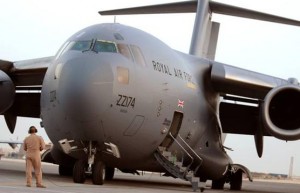
RAF C-17 in Afghanistan. There have already been calls for the UK SDSR to be reviewed following events in Middle East and North Africa. (RAF)
A third implication is for defence procurement, both in the UK and other Western countries facing severe budget constraints. Two months ago, could anyone see that seemingly stable regimes such as Egypt and Tunisia would collapse? Or that Libya would carry out airstrikes against its own population? Or that two armed Mirage F1s would defect to Malta with live rocket pods? As this is being written, the British Prime Minister is under pressure for the handling of evacuation flights of UK nationals in Libya (this is in comparison with Dutch and French Governments who, despite similar budget pressures and commitments to ISAF, managed to quickly respond to the crisis). A charter flight laid on by the UK Government departed some ten hours late from Gatwick – with two RAF Hercules and a RN frigate (ironically scheduled to be scrapped in April) then assigned to recover British citzens.
Those following British defence matters closely will have been reminded of previous warnings issued by senior military figures of ‘overstretch’ and that any further crisis or commitment would be extremely tough, if not impossible. Is this now it? In short then, this unfolding situation has demonstrated that then SDSR assumptions may be unravelling fast. These events show that air power is not a luxury but, in this uncertain world a necessity – to evacuate own nationals from these warzones, carry out surveillance, or even, in a proposal from a former Bosnia old hand, Lord Owen, enforce a ‘no-fly’ zone to prevent genocide. Indeed, in previous times, the US Sixth Fleet would have already put in an appearance over the horizon to let those clinging on to power know that others can intervene. Meanwhile while Western countries cut, Russia has annouced it is tripling its defence equipment budget to 2020 - with a $650bn paln to acquire 600 aircraft and 1,000 helicopters along with submarines and other assets.
These highly expensive military capabilities of air power do not guarantee a successful outcome – but they do give decision makers options beyond watching carnage unfold on grimy youtube videos.
Wider regional security
Finally, what does this mean for the wider regional security in the Middle East and Gulf? Already there are noises from Israel that it may increase numbers of its F-35 buy to deal with the uncertainty. Iran, despite protests of its own, too, may try to exploit the situation as the protests spread – especially in those countries with a large Shia population.
Egypt’s military rulers have already said that they intend to honour previous treaty agreements but events are happening so fast now that the outcome is unclear and nature abhors a power vacuum. Having chased Al-Qaeda out of Iraq and suppressed it in Afghanistan, it would be ironic and unsettling for the West to face Al-Qaeda franchise movements take real hold (or even power) in former allies. While these ‘social media’ revolutions propelled by information sharing, openness and calls for democracy may seem aligned with Western values – there is no clear answer to what the ‘end game’ may look like.
For Israel especially, the previously stable Arab autocratic regimes have meant that, despite repeated bloodshed and terrorism, it has not faced a ‘war of survival’ in a serious state-on-state clash or invasion threat since 1973. Though Israel still posesses the Middle East’s most combat effective and capable air force, a nightmare scenario for Tel Aviv would be a freshly united Arab world looking for an external enemy to unite it.
Finally, the Middle East has always been a highly lucrative market for defence companies. What will a realigned and reshaped region do for this market? Eygpt, for example, is a key US defence customer with F-16s, M1A1 tanks and E-3 Hawkeyes, among others, in its inventory. Meanwhile, for France, rumoured negotiations from last year to sell between 13-18 Rafale fighters in a €2.5bn deal now would seem to be extremely unlikely given current events.
Conclusion
These ‘shifting sands’ of popular uprisings, then, may be as significant as the 1989 collapse of the Berlin Wall and communism were. For aerospace and aviation – they present a particular set of challenges. Airlines, reeling after ash clouds chaos and extreme weather in 2010, now face the double whammy of reduced tourist traffic and potentially skyrocketing fuel bills – a lethal combination. Meanwhile, the strategic situation raises questions for defence (and air power) practitioners and decision makers – with the UK’s SDSR running straight into outside events. Finally, the change in governments, policies and regimes, though in the long term may be beneficial, brings new instability to the already volatile region.
from the Royal Aeronautical Society



